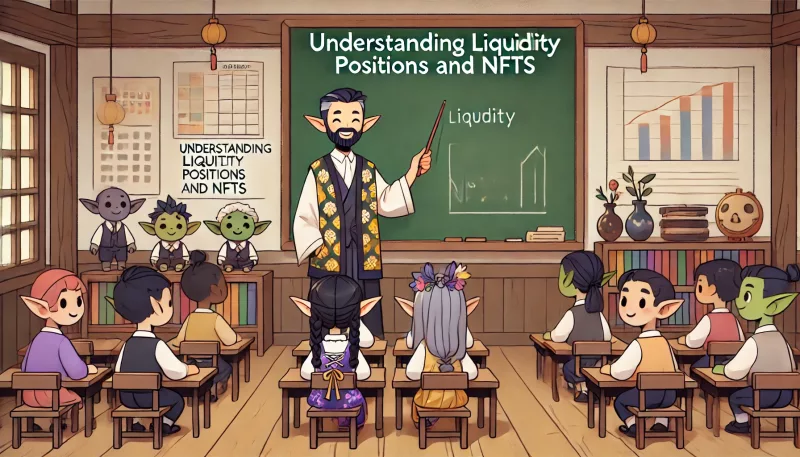Understanding Liquidity Positions and NFTs Podcast
Understanding Liquidity Positions and NFTs on Goblins
When you create a liquidity position on the Goblins Protocol, it is represented by an NFT (Non-Fungible Token). This NFT stores all the necessary data about your liquidity position and is deposited in your wallet. Here’s a detailed explanation of what this entails and some additional tips and considerations:
Representation of Liquidity Positions
- Liquidity Provider Tokens (LP Tokens) or NFT:
- Ownership: The wallet address that owns the LP tokens or NFT is the owner of the position.
- Goblins and NFTs:
- Data Storage: Goblins uses NFTs to represent liquidity positions, storing comprehensive data about the position in the NFT.
Data Stored in the NFT
- Nonce:
- Tracking: Used for tracking permit nonces to ensure the integrity of transactions.
- Operator:
- Permission Management: Normally set to a 0 address unless you have given permission to another entity to manage the liquidity.
- Token Addresses:
- Token0 Address: The address of the first token in the pool.
- Token1 Address: The address of the second token in the pool.
- Pool’s Fee Tier:
- Chosen Fee Tier: The selected fee tier for your liquidity pool, which affects the tick spacing and fee structure.
- Price Boundaries:
- Lower Tick: The low price boundary of the position.
- Upper Tick: The upper price boundary of the position.
- Liquidity Value:
- Liquidity Value: The value of the liquidity in the position, which determines your share of the pool.
- Fee Tracking:
- FeeGrowthInside0LastX128: Used for tracking fees on token0.
- FeeGrowthInside1LastX128: Used for tracking fees on token1.
- Tokens Owed:
- Temporary Values: TokensOwed0 and TokensOwed1 are used as temporary values during transactions.
Tips and Considerations
- Security:
- Secure Wallet: Ensure your wallet is secure and up-to-date to protect your NFTs and liquidity positions.
- Operator Permissions: Be cautious when granting operator permissions to manage your liquidity.
- Managing NFTs:
- View and Manage: Use your wallet’s interface to view and manage your NFTs, including those representing your liquidity positions.
- Track Changes: Regularly check for updates to the data stored in your NFTs, especially after performing transactions.
- Fee Tier Selection:
- Impact on Returns: The fee tier you choose affects the tick spacing and potential returns from your liquidity position. Consider market conditions and trading volumes when selecting a fee tier.
- Price Boundaries:
- Adjusting Ranges: You may need to adjust your lower and upper tick boundaries based on market movements to optimize your liquidity position.
- Utilizing Analytics Tools:
- Performance Monitoring: Leverage tools and platforms that provide analytics on your liquidity positions, helping you make informed decisions.
- Community Insights:
- Engage with Community: Participate in Goblins community forums and groups to gain insights, share experiences, and receive support.
Conclusion
On the Goblins Protocol, liquidity positions are represented by NFTs, which store detailed information about your position. Understanding the data stored in these NFTs and utilizing best practices for managing and securing your positions can help you optimize your liquidity provision and maximize returns. Stay informed, use available tools, and engage with the community to enhance your participation in the Goblins ecosystem.

